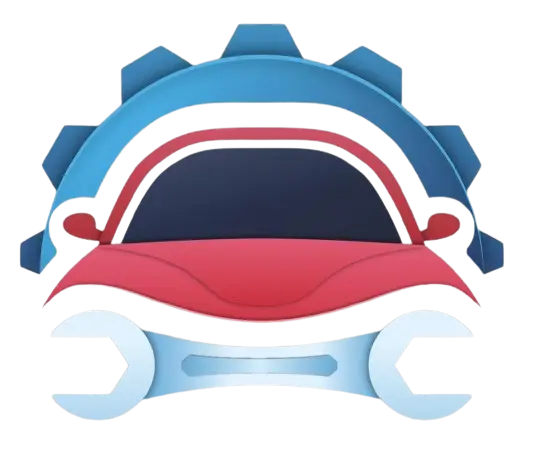Cruising down the open road in your stylish Peugeot 208, the wind in your hair and the engine purring contentedly. It’s a picture of automotive bliss, until… THWOMP! A flat tire throws your world into chaos. But what if it didn’t have to happen? Enter the unsung hero of a smooth journey: correct tyre pressure.
Maintaining the right tyre pressure in your Peugeot 208 isn’t just about avoiding roadside drama. It’s a secret weapon for:
- Safety: Properly inflated tyres grip the road better, meaning shorter braking distances and improved handling, especially in tricky weather conditions.
- Fuel Efficiency: Underinflated tyres work harder, guzzling more petrol and putting a dent in your wallet. Pumping them up saves you money at the pump.
- Tyre Wear: Uneven wear patterns caused by incorrect pressure lead to premature tyre replacement, another unnecessary expense.
So, how much air are we talking about? It’s not a one-size-fits-all situation. Your trusty Peugeot manual or a sticker inside the driver’s door will tell you the recommended tyre pressure for your specific model and load.
Remember, these numbers are for cold tyres, not the ones basking in the summer sun after a long drive.
Investing in a good tyre pressure gauge (digital ones are super user-friendly!) is worth its weight in gold. Check your tyre pressure every month, and before long journeys or carrying heavy loads. Don’t forget the spare!
Table
| Engine | Tyre size | Front pressure | Rear pressure | Front loaded pressure | Rear loaded pressure |
| 1 | 185 65 R15 88T | 32 | 29 | 32 | 33 |
| 1 | 195 55 R16 87T | 32 | 29 | 32 | 33 |
| 1 | 205 45 R17 84T | 32 | 29 | 32 | 33 |
| 1.6 | 195 55 R16 87H | 33 | 30 | 33 | 35 |
| 1.6 | 205 45 R17 88V XL | 36 | 30 | 36 | 36 |
| 1.6 GTI | 205 45 R17 88V XL | 39 | 39 | 39 | 39 |
| 1.6 THP | 205 45 R17 88V XL | 36 | 30 | 36 | 36 |
Bonus Tip: Peugeot 208 models with Tyre Pressure Monitoring System (TPMS) will alert you if any tyre drops below the recommended pressure. But remember, it’s still good practice to do regular checks yourself.

Here’s the takeaway: A few minutes spent checking your tyre pressure can pay off big time. You’ll avoid the hassle of a flat tyre, save money on fuel and tyre replacements, and most importantly, drive with confidence knowing your Peugeot 208 is performing at its best. So, pump it up, hit the road, and enjoy the journey!
Let’s Recap
- Check your Peugeot 208 tyre pressure monthly (and before long journeys).
- Use the recommended pressure listed in your manual or on the driver’s door sticker.
- Invest in a reliable tyre pressure gauge.
- Don’t neglect your spare tyre!
Peugeot 208 Tyre Pressure FAQs
1. How often should I check my Peugeot 208 tyre pressure?
It’s best to check your tyre pressure monthly, and even more frequently before long journeys or carrying heavy loads. Remember, tyres lose pressure naturally over time, so regular checks are key.
2. What’s the recommended tyre pressure for my Peugeot 208?
The recommended pressure varies depending on your specific model and year. Look for the sticker inside the driver’s door or consult your manual for the exact PSI (pounds per square inch) for each tyre.
3. Do I need different tire pressures in winter?
While colder temperatures can slightly decrease tyre pressure, the manufacturer’s recommended pressure is usually suitable for all seasons. However, double-checking before winter driving is always a good idea.
4. What happens if my tires are underinflated?
Underinflated tyres have several downsides:
- Reduced grip: This can lead to longer braking distances and less control in corners, increasing the risk of accidents.
- Increased fuel consumption: Underinflated tyres work harder, meaning your engine burns more fuel for the same distance.
- Uneven tyre wear: This can lead to premature tyre replacement.
5. What happens if my tires are overinflated?
Overinflated tyres are also not ideal:
- Reduced comfort: You’ll have a rougher ride due to decreased tyre contact with the road.
- Increased risk of blowouts: Overinflated tyres are more susceptible to damage from potholes or other road hazards.
6. My TPMS light is on! What does it mean?
The Tyre Pressure Monitoring System (TPMS) light indicates that one or more tyres are significantly underinflated. Check your tyre pressure immediately and inflate them to the recommended level.
7. Do I need special equipment to check my tyre pressure?
While you can use a basic pressure gauge at most gas stations, it’s recommended to invest in a good quality digital gauge for more accurate readings.
8. How can I save money on tyres and fuel by maintaining correct tyre pressure?
Correct tyre pressure improves fuel efficiency and extends tyre life, saving you money in the long run. Investing in a gauge and keeping your tyres properly inflated is a cost-effective way to care for your Peugeot 208.
9. Should I check my spare tire pressure too?
Absolutely! A flat spare tyre is no fun, so check its pressure regularly along with your other tyres.
10. Where can I find more information about Peugeot 208 tyre maintenance?
Your Peugeot manual and the official Peugeot website are great resources for specific information about your model and recommended tyre maintenance practices.

